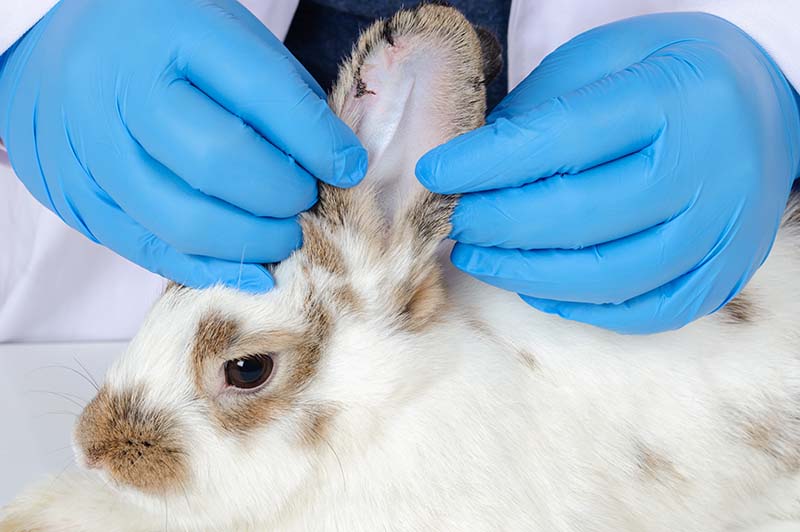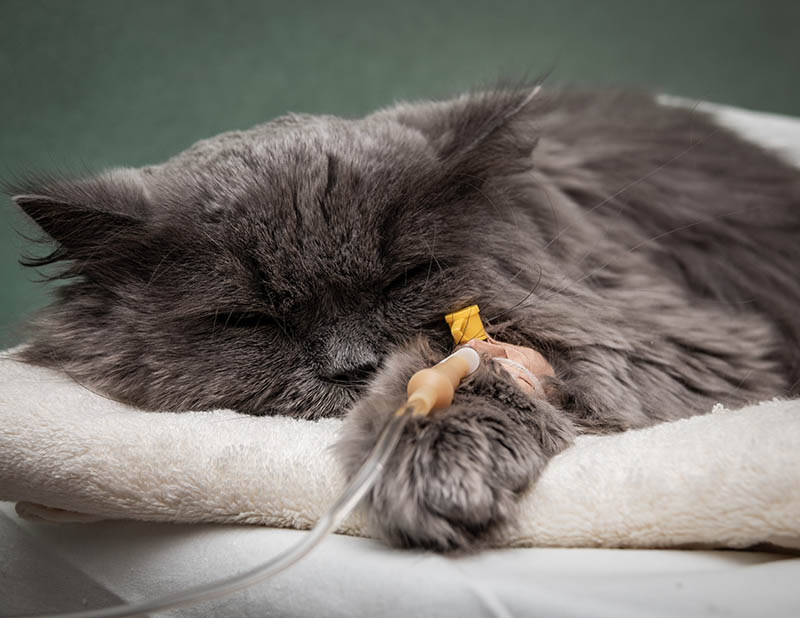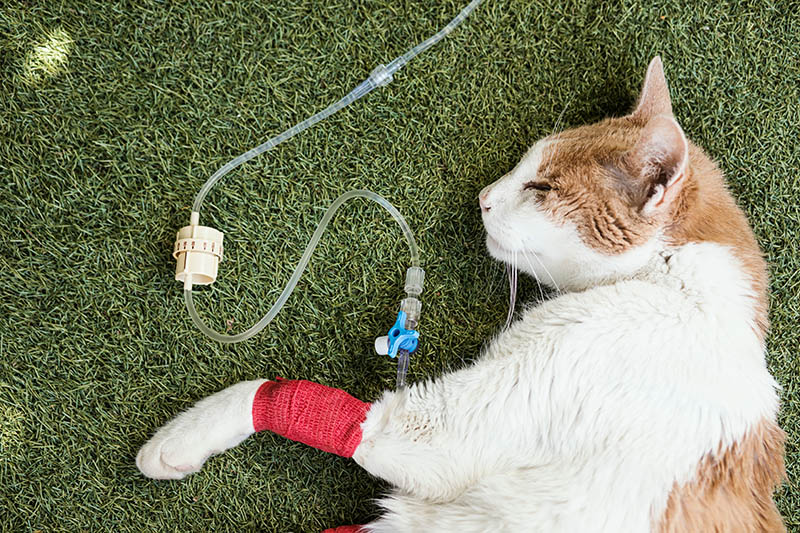VET APPROVED

The information is current and up-to-date in accordance with the latest veterinarian research.
Learn more »Click to Skip Ahead
Ear problems can be quite common and troublesome for both rabbits and their caretakers, and an ear mite infestation is one common ear problem rabbits can face. Caretakers can learn how to recognize rabbit ear mites and take the right steps to successfully tackle this common health issue.

What Are Rabbit Ear Mites?
Ear mites (Psoroptes cuniculi) are tiny parasitic organisms that infest the insides of the rabbits’ ears. While the mites are very small, they are quite mobile, so sometimes they can be visible to the naked eye if in large quantities.
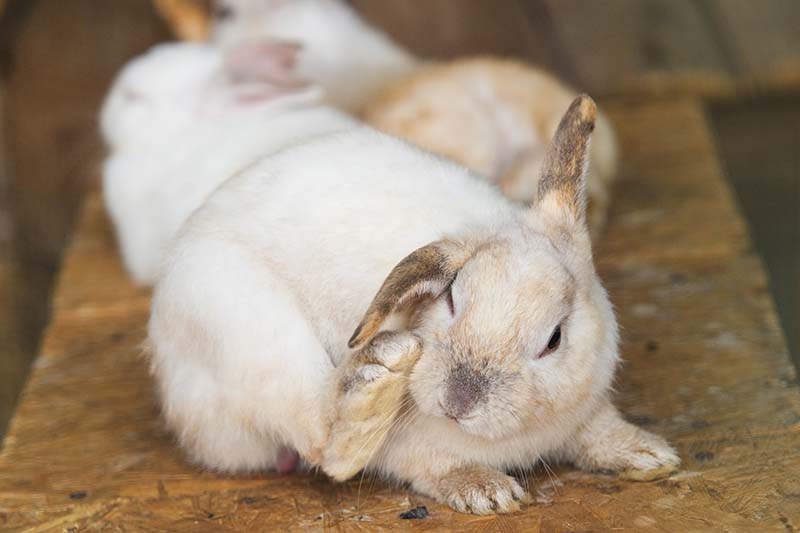

The 6 Tips to Treat Rabbit Ear Mites
Below are six key steps rabbit caretakers can take to quickly recognize and manage ear mites in rabbits:
1. Identify the Clinical Signs
- Excessive scratching
- Shaking the head
- Irritation in the ear canal
- Brown crusts (also known as ‘cankers’)
- Scratch marks or inflammation on the outside of the ears
- Drooping ears
- Unexplained weight loss
2. Consult a Veterinarian
If you see these signs in your rabbit, be sure to have your rabbit properly evaluated by a veterinarian. Your veterinarian will examine the ears with an otoscope, take a sample of the debris/discharge, and perform a microscopic examination. Oftentimes, veterinarians are happy to show pet owners the wiggly mites under the microscope.
3. Use the Proper Medications
After a diagnostic test, your veterinarian will recommend a specific treatment to properly eliminate the mites. Follow your veterinarian’s instructions closely, including the medication’s dosage and frequency. It is important not to stray from their recommendations or suddenly stop the course of treatment even if your rabbit seems to be doing better. A full course of treatment is important to be sure the ear mites have been completely eliminated.
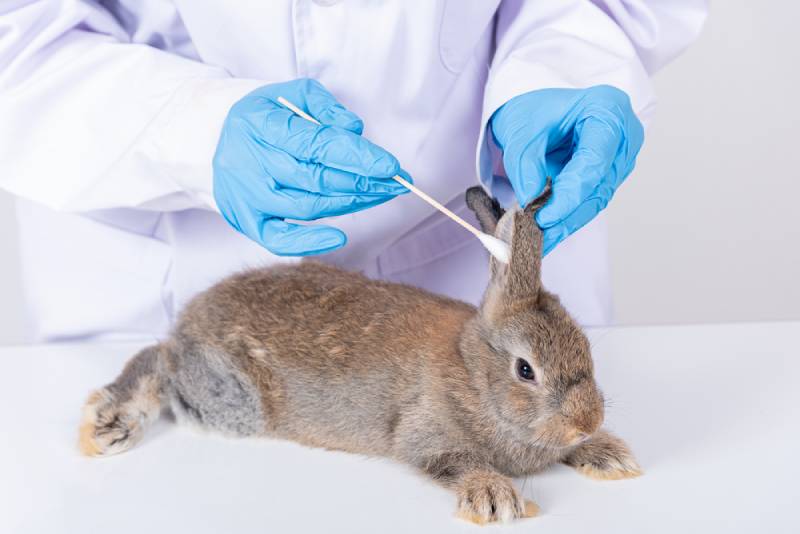
4. Clean the Environment
Rabbit ear mites can survive for up to three weeks off their hosts. It is essential to thoroughly clean your rabbit’s environment to help eliminate the problem. Temporarily move your rabbit from its normal area to a temporary space (e.g., a large cardboard box or playpen). If you want to be extra sure, it is best to dispose of your rabbit’s bedding and any wooden objects in their hutch, as these can be difficult to clean properly (including bedding, cage, and surrounding areas). Thoroughly clean the environmental surfaces with a disinfectant.
You can also consult your veterinarian for a rabbit-safe insecticide for the environment. It is best not to bring any rabbits back into the previous area until after four weeks. If you have multiple rabbits, it is best to also isolate the other rabbits from the infested rabbit until the issue is resolved.
5. Resist the Temptation to Remove Crusts From Your Rabbit’s Ears
In severe cases of ear mite infestation, some rabbits develop thick crusts (cankers) on the ears. Many people have the urge to remove these crusts, but this should never be done. Forcing the thick crusts off is very painful for a rabbit and can lead to damaged skin and bleeding. Once the infestation has been properly treated, most of these crusts eventually loosen and will fall away on their own.

6. Monitor for Future Problems
Following the course of treatment, it is best to have your rabbit rechecked by your veterinarian to be sure the issue has been resolved. After resolution, it is helpful to periodically monitor your rabbit for new signs of irritation, redness, crusts, or bothersome ears.

Conclusion
Ear mites are a nuisance for rabbits and pet owners. With proper treatment, environmental cleaning, and monitoring, your rabbit can make a swift recovery within a month’s time. Always consult your vet about this situation once you notice even the mildest signs of ear mites. You do not want it to get worse.
Featured Image Credit: nicepix, Shutterstock
